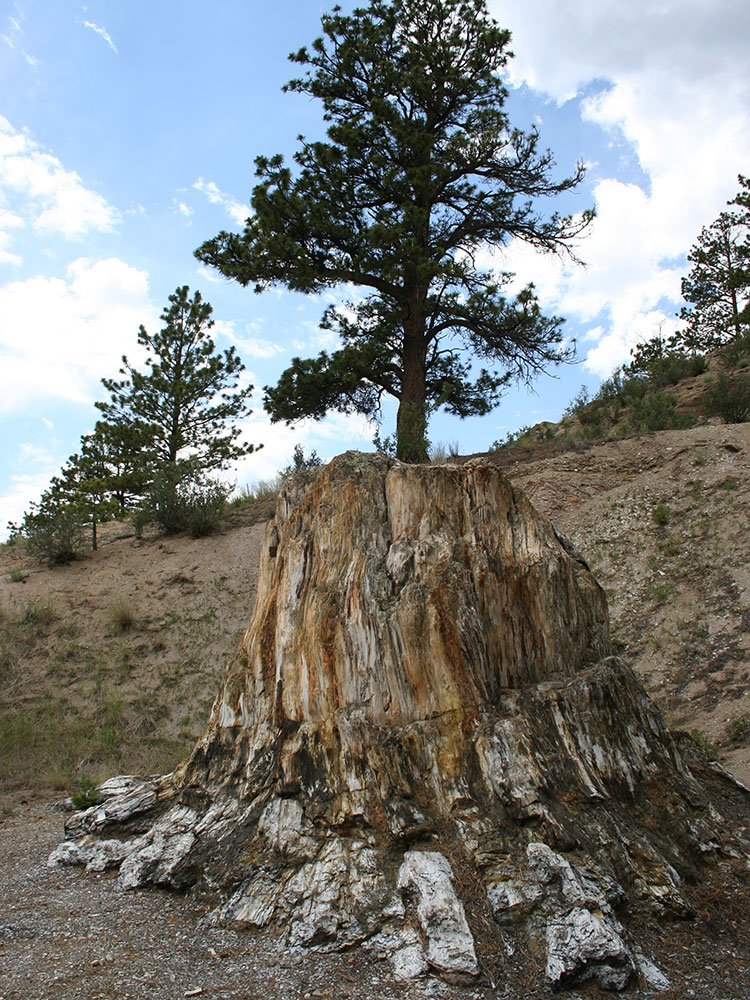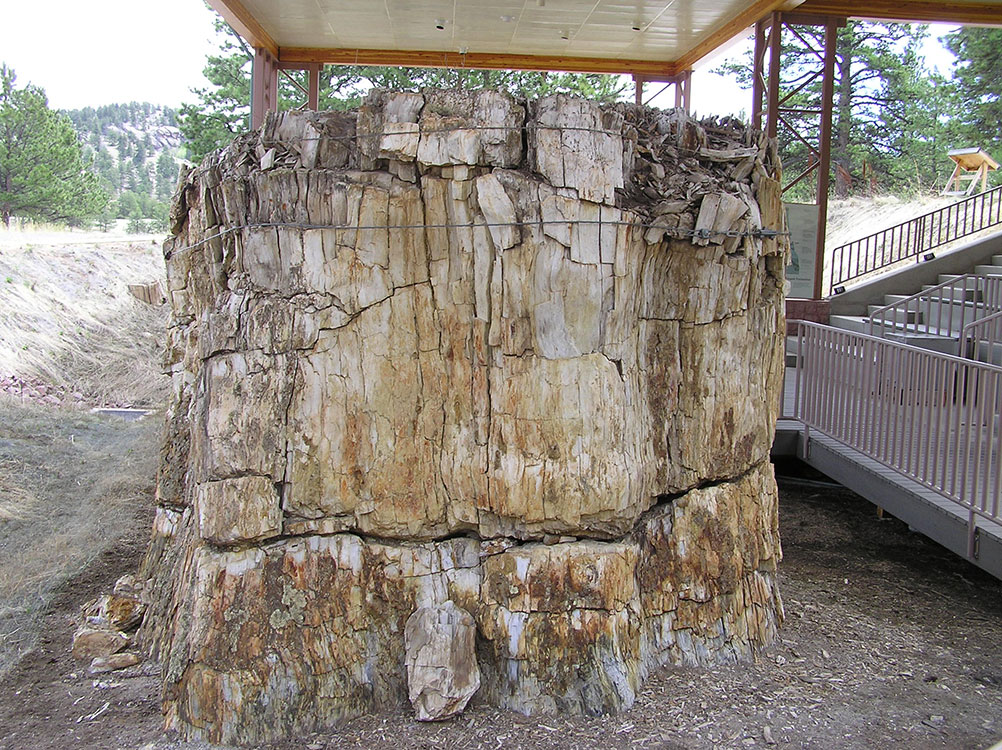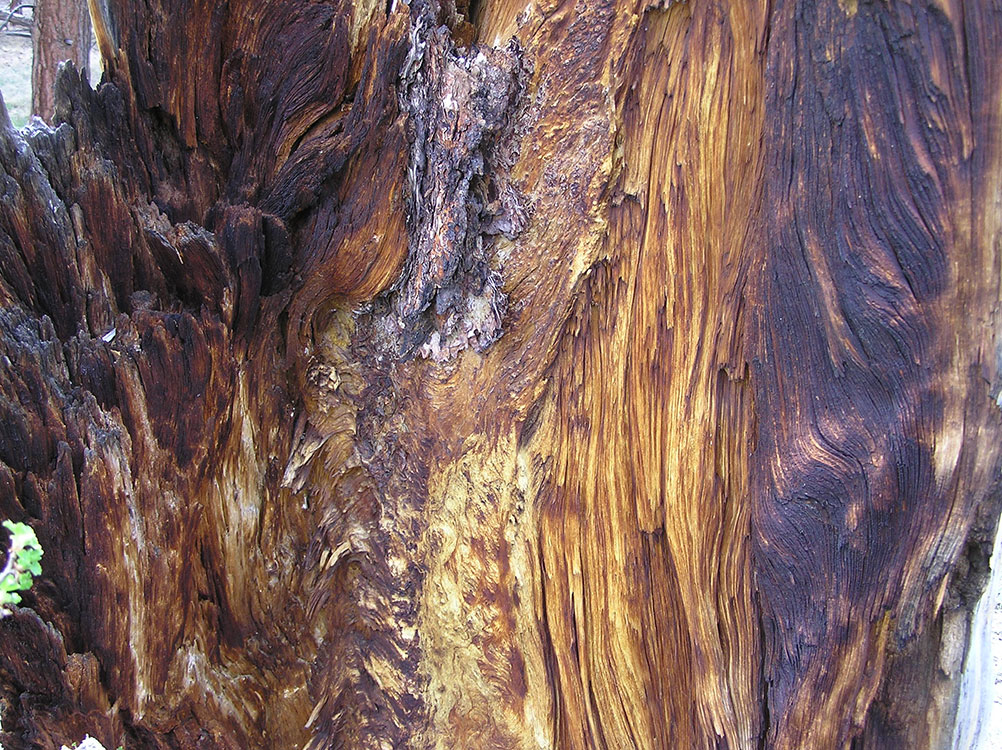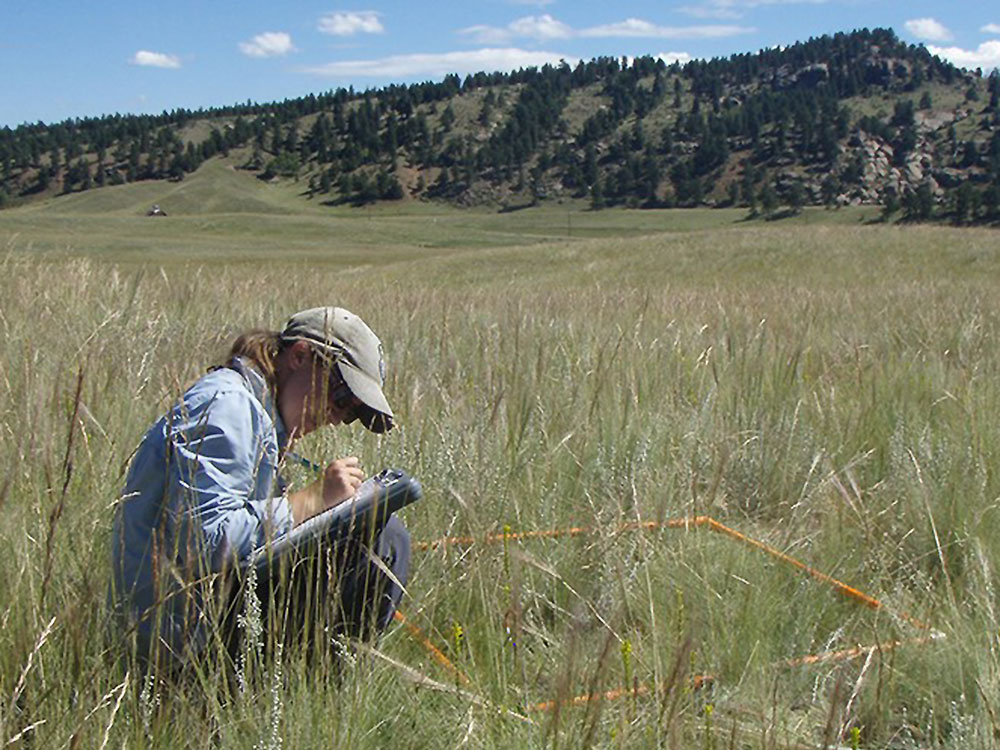Monument protecting the Florissant Formation a sedimentary geologic formation noted for the abundant and exceptionally preserved insect and plant fossils that are found in the mudstones and shales
Overview
The Florissant Formation is a sedimentary geologic formation outcropping around Florissant, Teller County, Colorado. The formation is noted for the abundant and exceptionally preserved insect and plant fossils that are found in the mudstones and shales. Based on argon radiometric dating, the formation is Eocene (approximately 34 million years old ) in age and has been interpreted as a lake environment. The fossils have been preserved because of the interaction of the volcanic ash from the nearby Thirtynine Mile volcanic field with diatoms in the lake, causing a diatom bloom. As the diatoms fell to the bottom of the lake, any plants or animals that had recently died were preserved by the diatom falls. Fine layers of clays and muds interspersed with layers of ash form "paper shales" holding beautifully-preserved fossils. The Florissant Fossil Beds National Monument is a national monument established to preserve and study the geology and history of the area.
History
The name Florissant comes from the French word for flowering. In the late 19th century tourist and excavators came to this location to observe the wildlife and collect samples for collections and study. The Petrified Forest, one of the main attractions at the monument today, lost much of its mass due to collectors removing large amounts of petrified wood from the site. During the 1860s and 1870s the area was mapped by geologists for the first time. Paleontologists followed soon after to collect fossils for research. In 1969, the Florissant Fossil Bed National Monument was established. Today, the park is the site of ongoing paleontological investigations.

Paleoflora
There is a large diversity of plants in the beds of the Florissant Formation, ranging from large redwoods to microscopic pollen. The petrified forest is one of the main tourist attractions at the monument with an estimated 30 preserved stumps. They are among the largest petrified stumps in the world. The majority of the stumps have been identified as similar to modern sequoias, or redwoods. These trees could have been as tall as 60 m (200 ft) until they were killed by lahars suffocating the oxygen supply to their roots. Dendrochronological examination of the tree rings has resulted in estimated ages of 500-700 years old when the trees died and buried. Some of the stumps belong to angiosperms.
The Florissant Formation is also known for its fossilized leaves and the impressions they made. There are also specimens of fruits, seeds, cones, and flowers, which are all preserved in the paper shales of the formation. Most of the leaves come from trees and shrubs. Angiosperms are the dominant paleoflora, but there are also conifers present.
Some of the cones, foliage, and pollen have been identified as coming from the sequoias. There are distinct differences in the fossilized sequoia material to the modern redwoods of California. The foliage in the fossils is thinner and the female cones are smaller than the modern examples. There have been more than 130 species of pollen that have been identified in the shale beds at Florissant. These species represent samples from many different habitats that were located near and around the lake, as well as farther up the valley.
The invertebrate fossils of the Florissant are arthropods, such as spiders, millipedes, insects, and ostracods; and mollusks such as clams and snails. Of these, the most significant seem to be the spiders and insects, of which over 1,500 species have been identified in the fossil beds.
Arachnids are well represented in the Florissant, mostly a large variety of spiders. There have also been possible examples of harvestmen and daddy long-legs. There may be some evidence for gall mites, but no fully identified body fossils of them have been discovered yet. One unusual aspect of the spiders found in the formation is that they are not found with their legs curled in, but instead they are fully extended. This could indicate that they died in warmer temperature or acidic waters. The insects that are found in the ash-clay beds are diverse and numerous. Mayflies, dragonflies, damselflies, grasshoppers, crickets, katydids, cockroaches, termites, earwigs, web-spinners, cicadas, snake flies, lacewings, beetles, flies, mosquitoes, butterflies, moths, wasps, bees, ants, and other insects have all been found in the Florissant. Of these, the beetles are the most diverse and dominate in amount of specimens found as fossils. About 38% of the specimens found in the fossil beds are varieties of beetle. These fossils are aquatic and terrestrial insects, giving insight into the ecology and biology of the area.
The vertebrate fossils in the Florissant are predominantly small fragments of incomplete bones. There have been a few described species of vertebrates, mostly fish, but also birds and mammals. The fish discovered at the site include bowfins, suckers, catfishes, and pirate perches. Most of these were bottom dwellers, except the perches, and many were tolerant of poor water conditions. Most of the fish have been found in the same shale layers versus other shale layers. This could indicate that there were more tolerable times for fish populations over the history of the lake than other times.
Three examples of birds have been found in the beds, including a cuckoo. Most of the skeleton was lost, but there were still enough diagnostic features to identify the bird. There are also examples of rollers and shorebirds.
This article uses material from the Wikipedia article "Florissant Formation", which is released under the Creative Commons Attribution-Share-Alike License 3.0
-1000.jpg)


